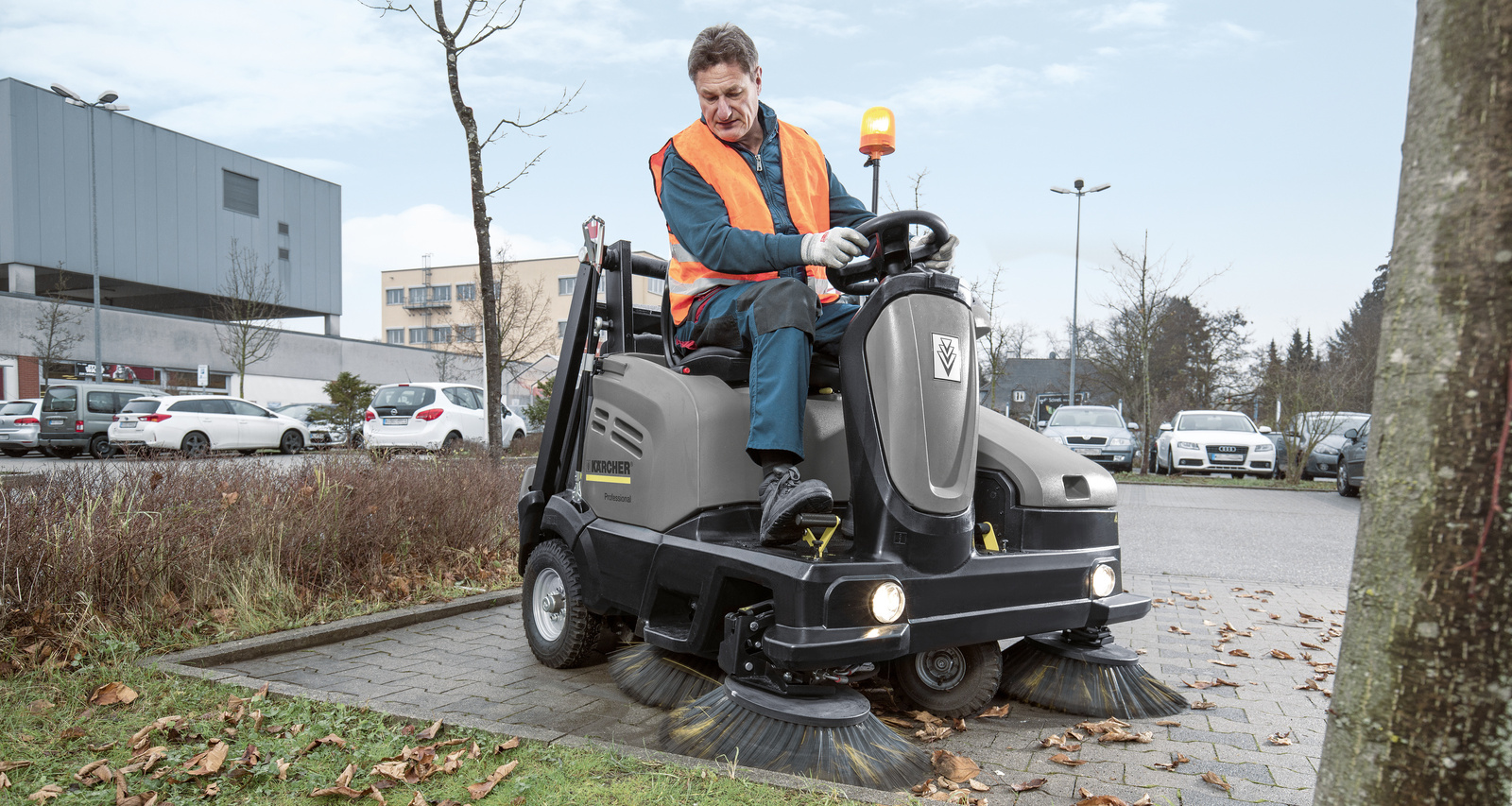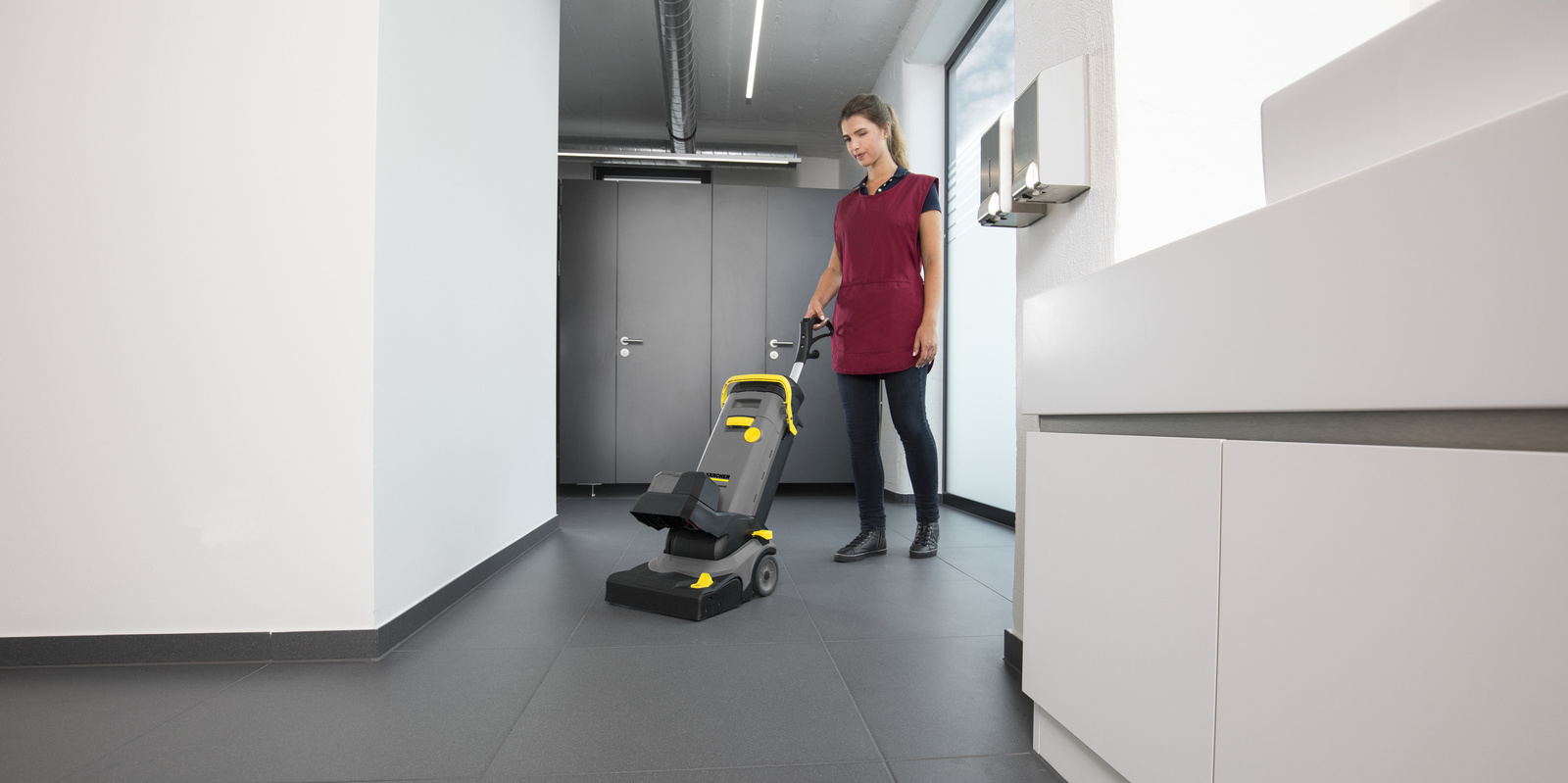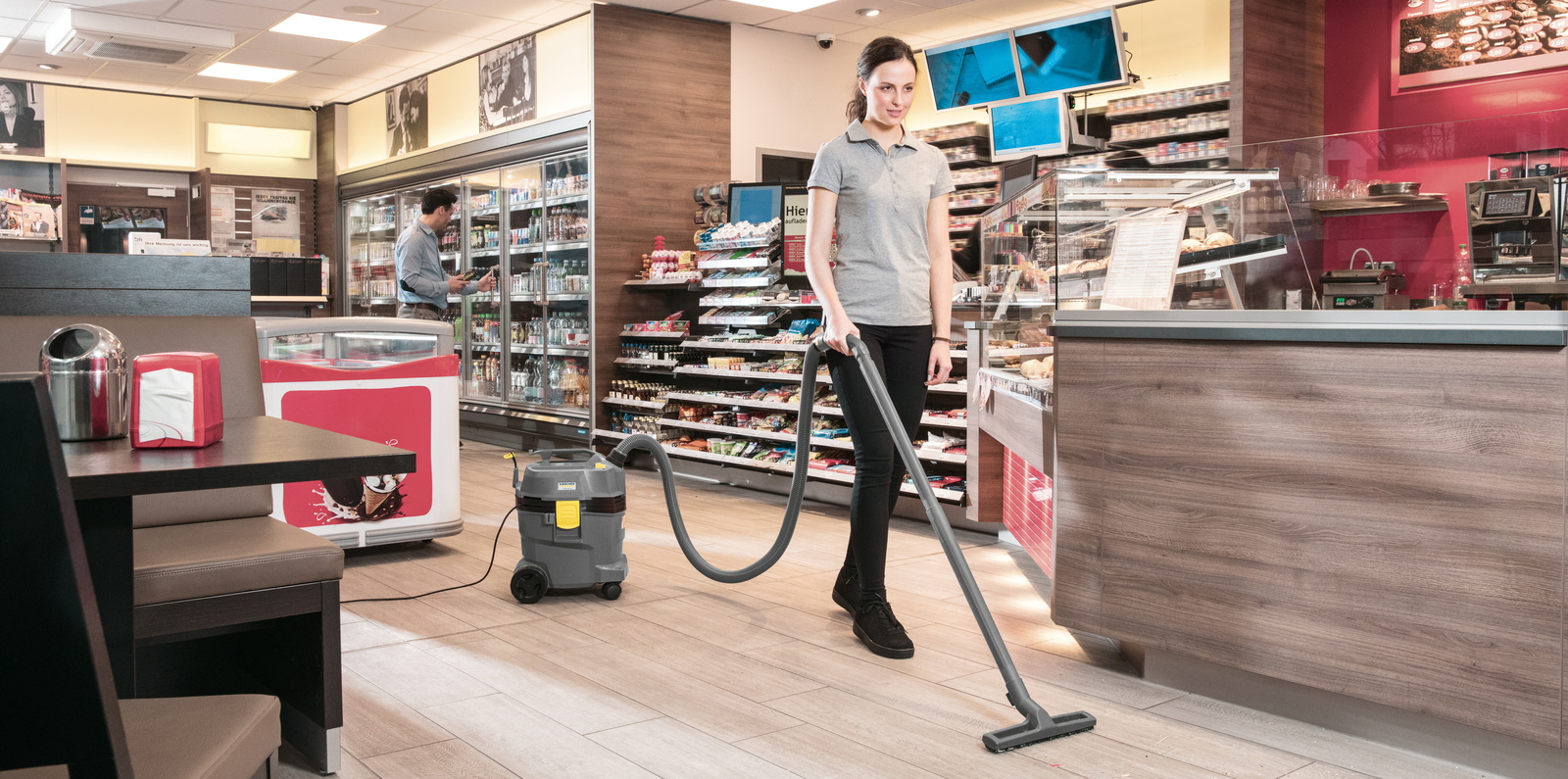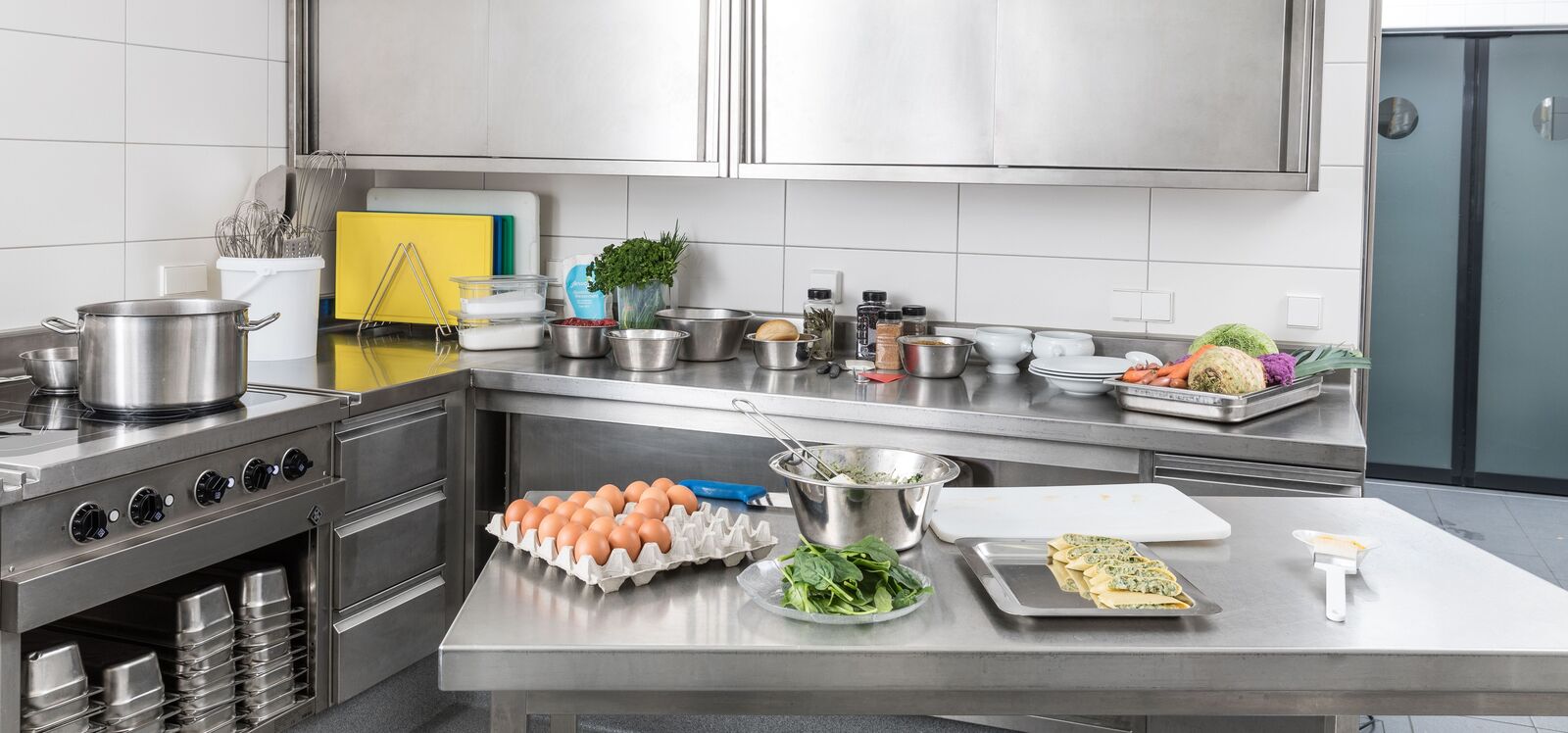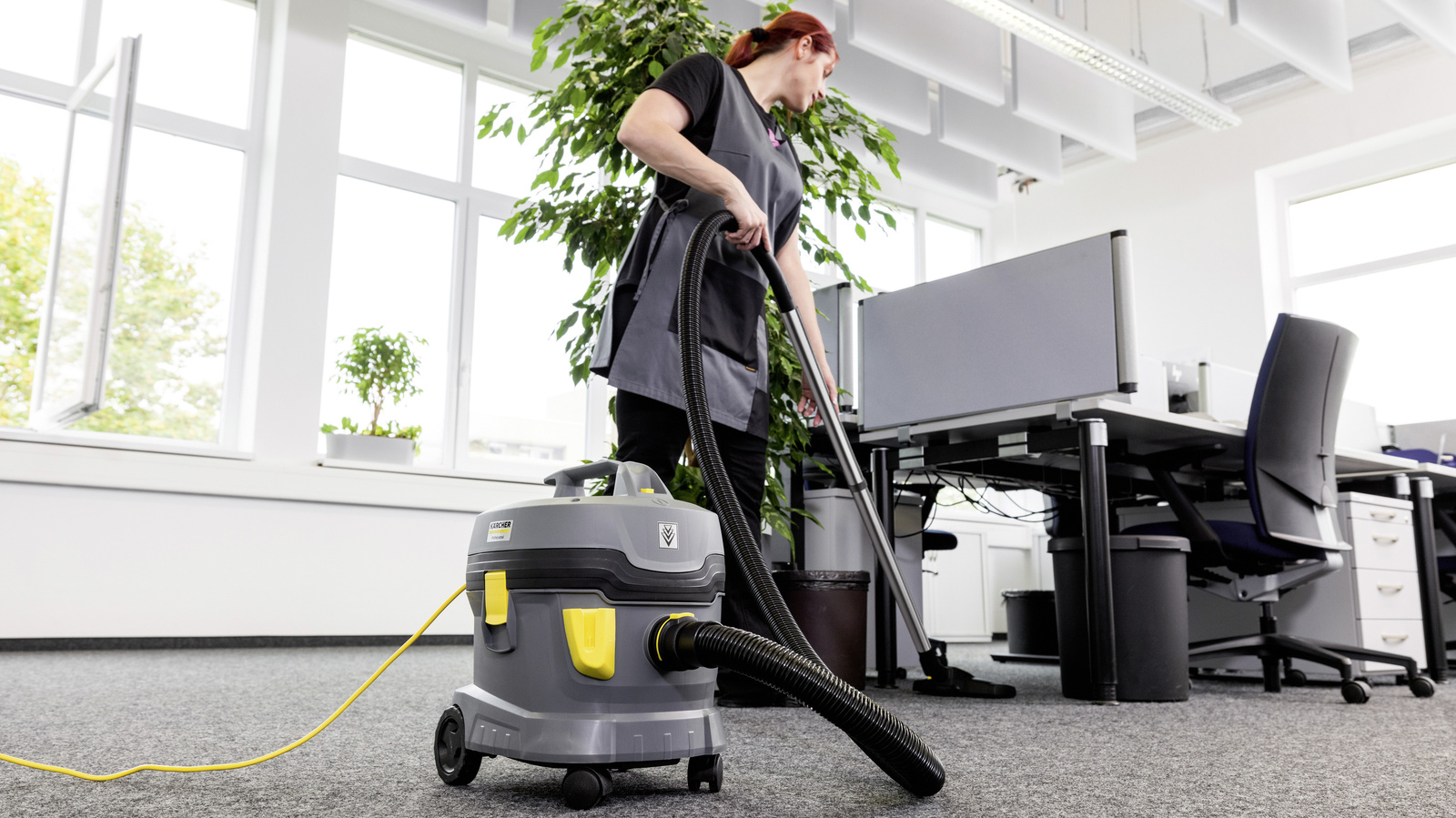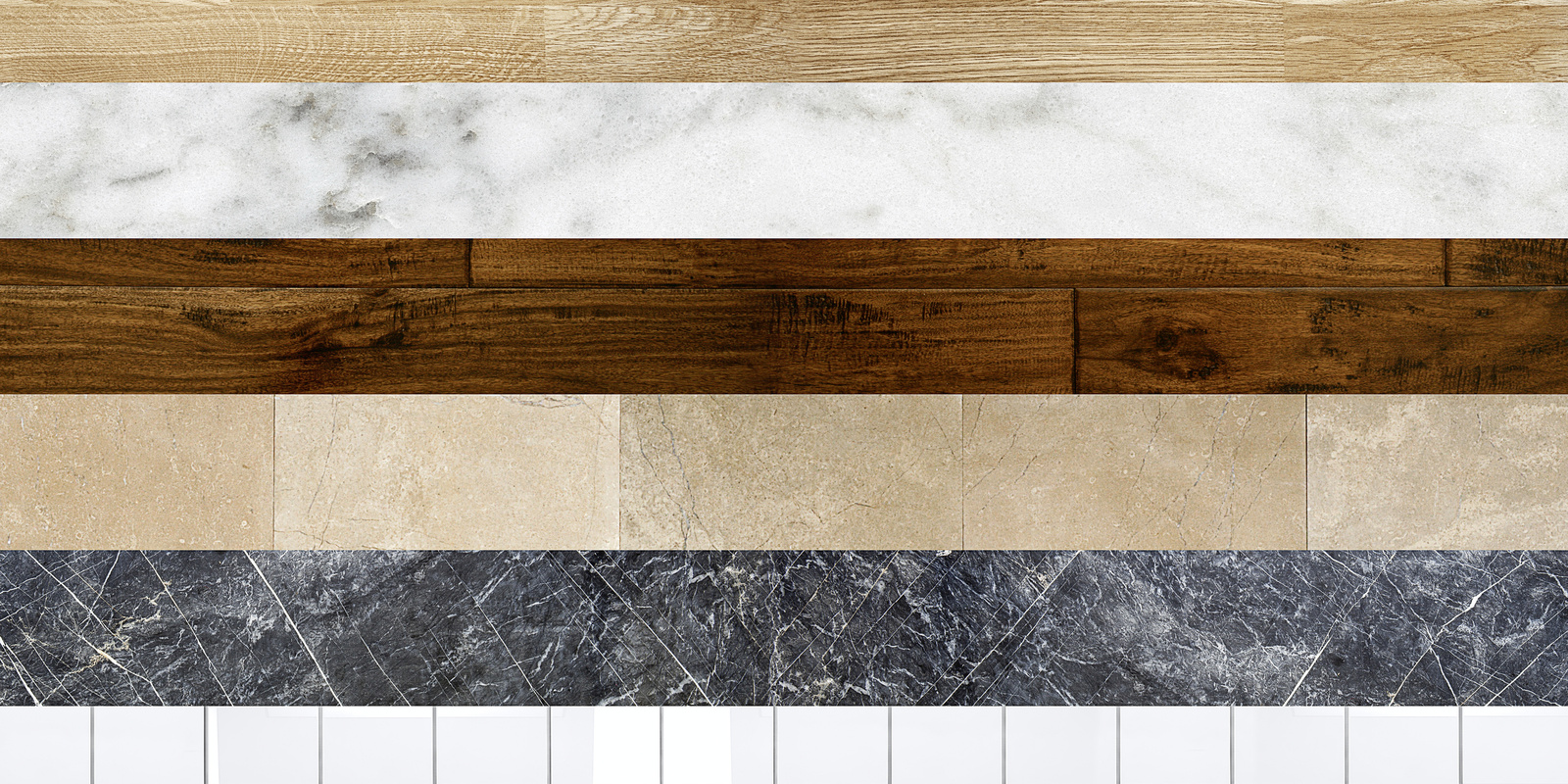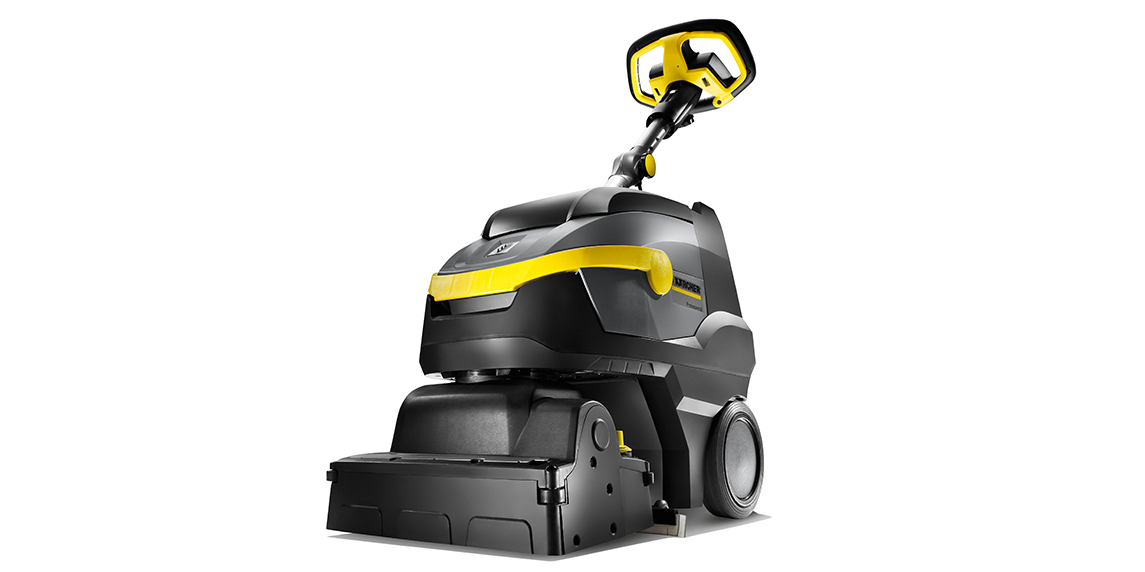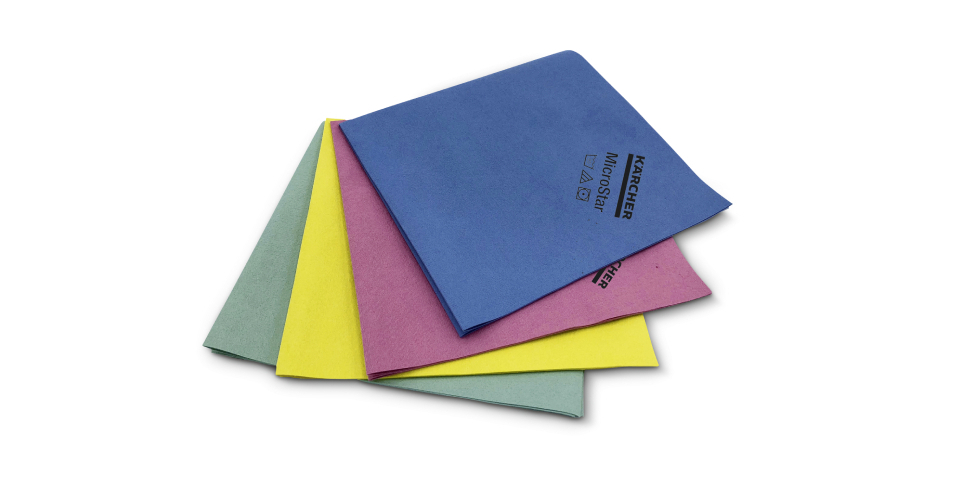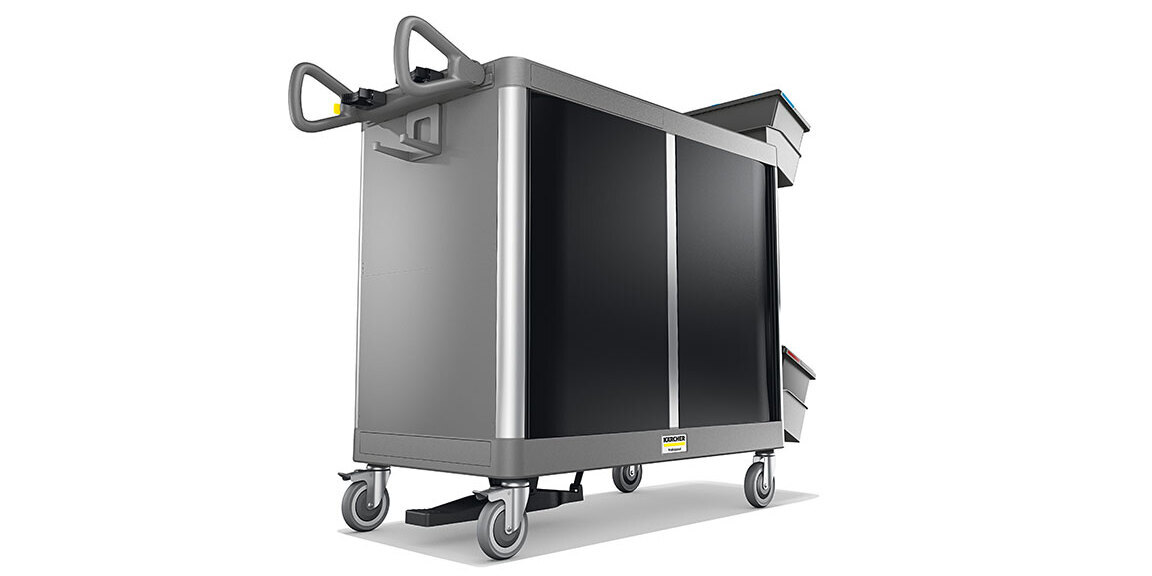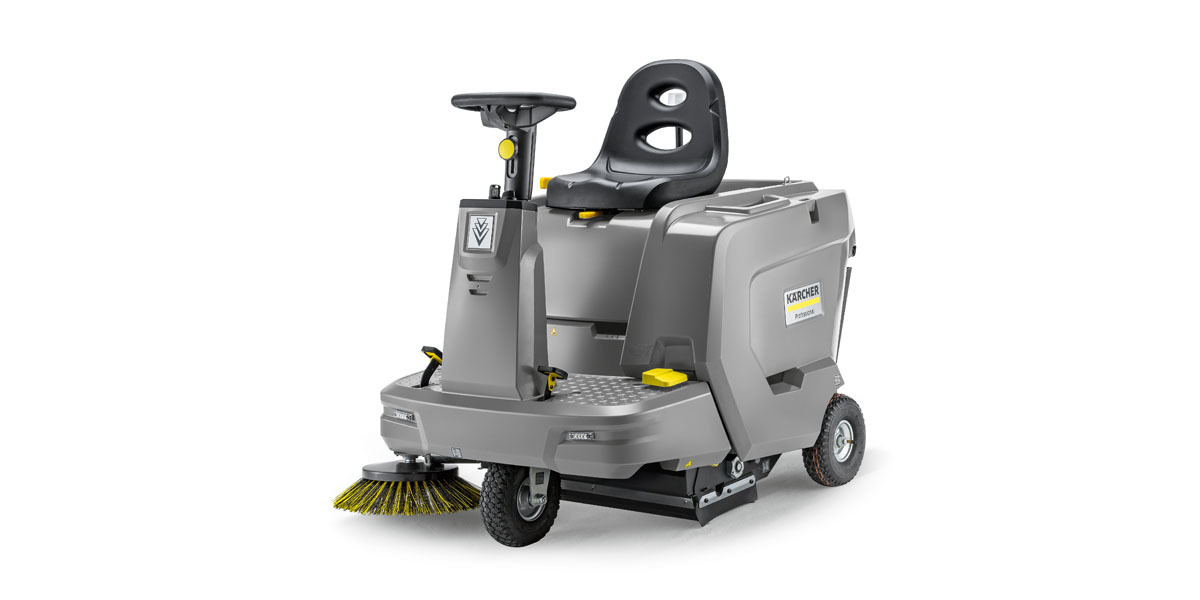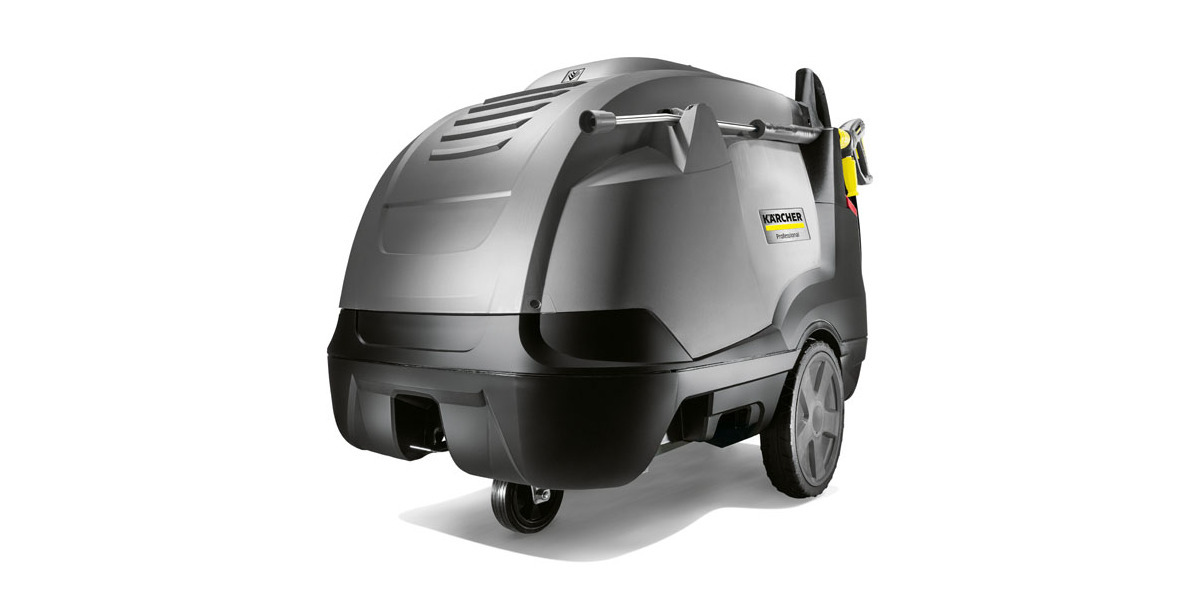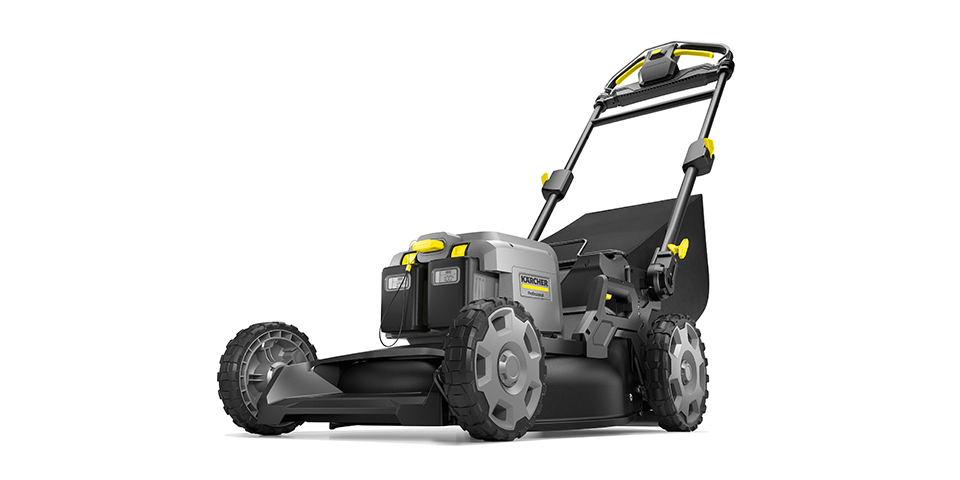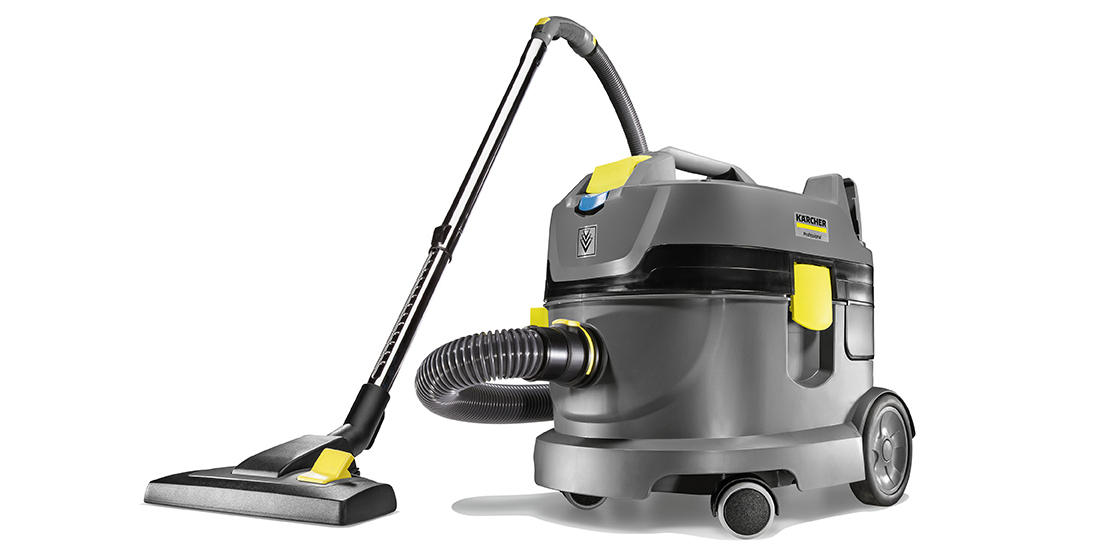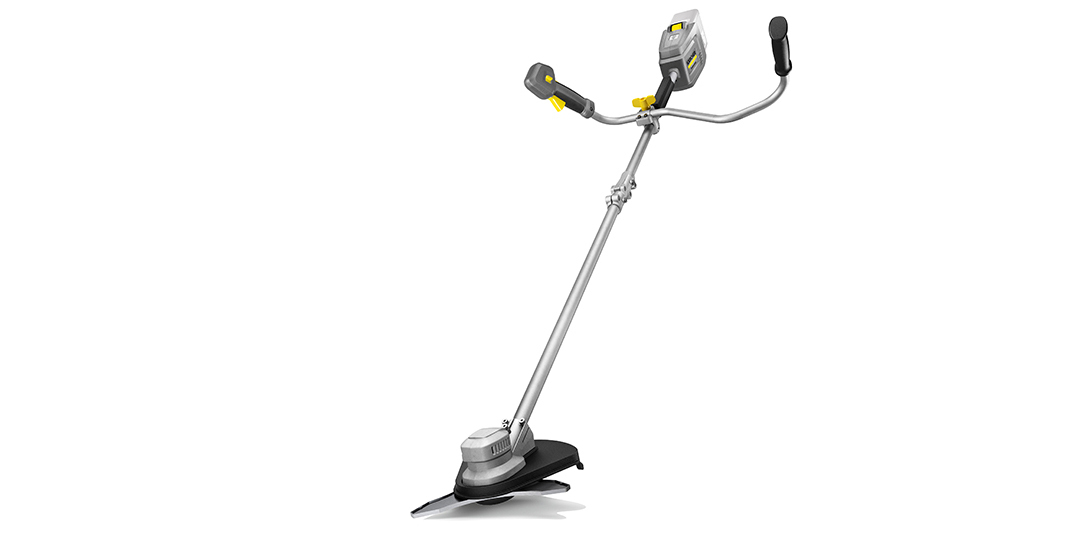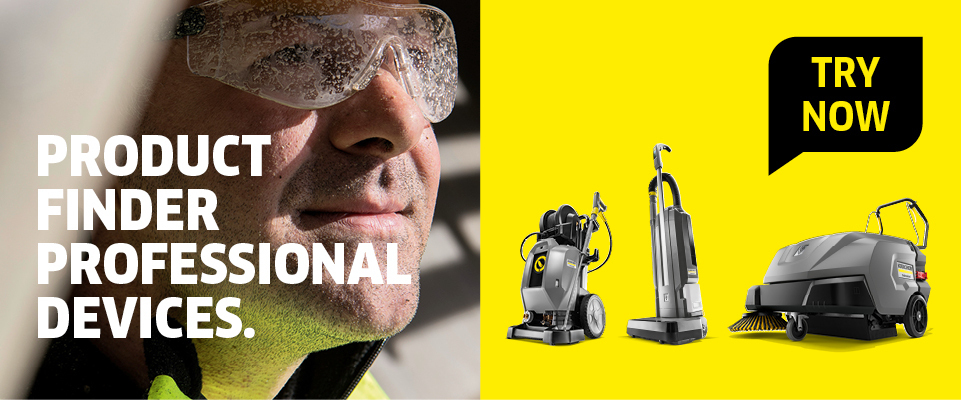Cleaning retirement homes
Cleaning retirement homes is a complex task with great responsibility, because in such a sensitive environment, cleanliness and hygiene are fundamental to the health of the residents. A carefully conceived concept reduces the cleaning effort and ensures that maintenance, intermediate and deep cleaning are all efficiently interlinked. This saves time and money. Battery-powered machines offer a number of advantages that further simplify the cleaning process.
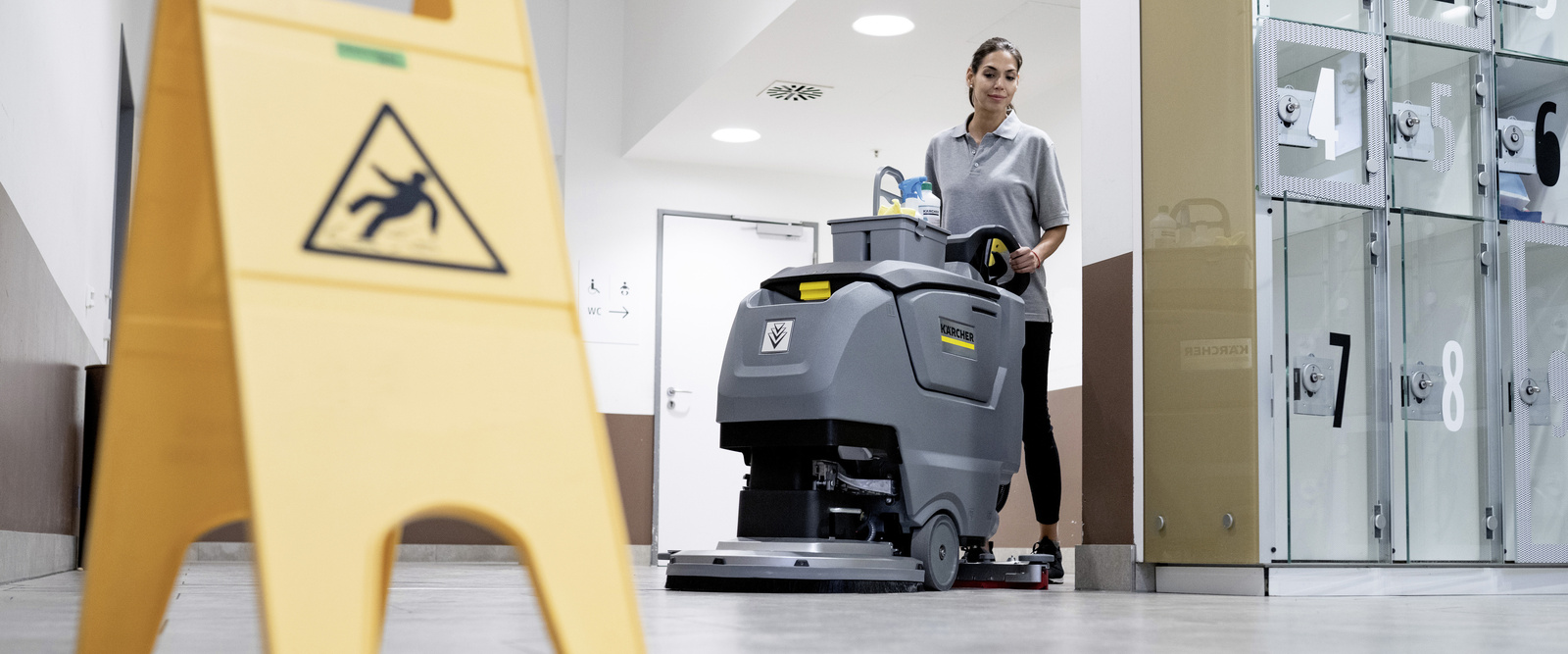
The PDIR system
When cleaning in challenging environments such as retirement homes, a systematic approach is everything. A holistic cleaning concept such as PDIR (Preventative, Daily, Interim, Restorative) is fundamental to achieving thorough cleaning results, reducing workload and extending the service life of surfaces and floors.
"P" for "preventative": prevent dirt and reduce costs
Preventative cleaning measures are necessary to stop dirt and dust from building up in the first place. This includes regularly clearing the outside area and car parks of litter, dust and dirt. In the entrance area, so-called "clean-off zones" with doormats help to minimise the amount of dirt entering the building. This reduces the cleaning workload inside, saving time and money.
"D" for "daily": daily cleaning for safety
Whether residents' rooms, visitor rooms or dining rooms – retirement homes are heavily frequented day in day out, and unexpected spillages and dirt build-up are unavoidable. It is important that stains are removed quickly using the right methods, because fresh stains are much easier to remove than dried-on ones. Regular cleaning also helps to prevent the spread of dirt and germs, which is crucial for the health and safety of residents.
"I" for "interim": intermediate cleaning is good for the environment and the budget
If daily maintenance cleaning is no longer sufficient, appropriate methods for intermediate cleaning of surfaces and floors must be implemented. Intensive but economical methods extend the intervals until the next time-consuming deep clean. This reduces the workload, time and costs and protects the environment.
"R" for "restorative": deep cleaning to preserve value
Even with the best care and regular intermediate cleaning, there eventually comes a time when a deep clean is necessary. Restorative processes get floors and surfaces looking good as new and at the same time extend the service life of the materials. This reduces repair and replacement costs in the long term. With the right cleaning systems, this can be done efficiently and with minimum resources.
Prevention: outdoor area and entrance area
Well-maintained green spaces, clean car parks and pavements significantly reduce the amount of dirt entering the building. Whatever the weather, there are machines that make this work easier. Targeted measures in the entrance area can further reduce the amount of cleaning required in the building.
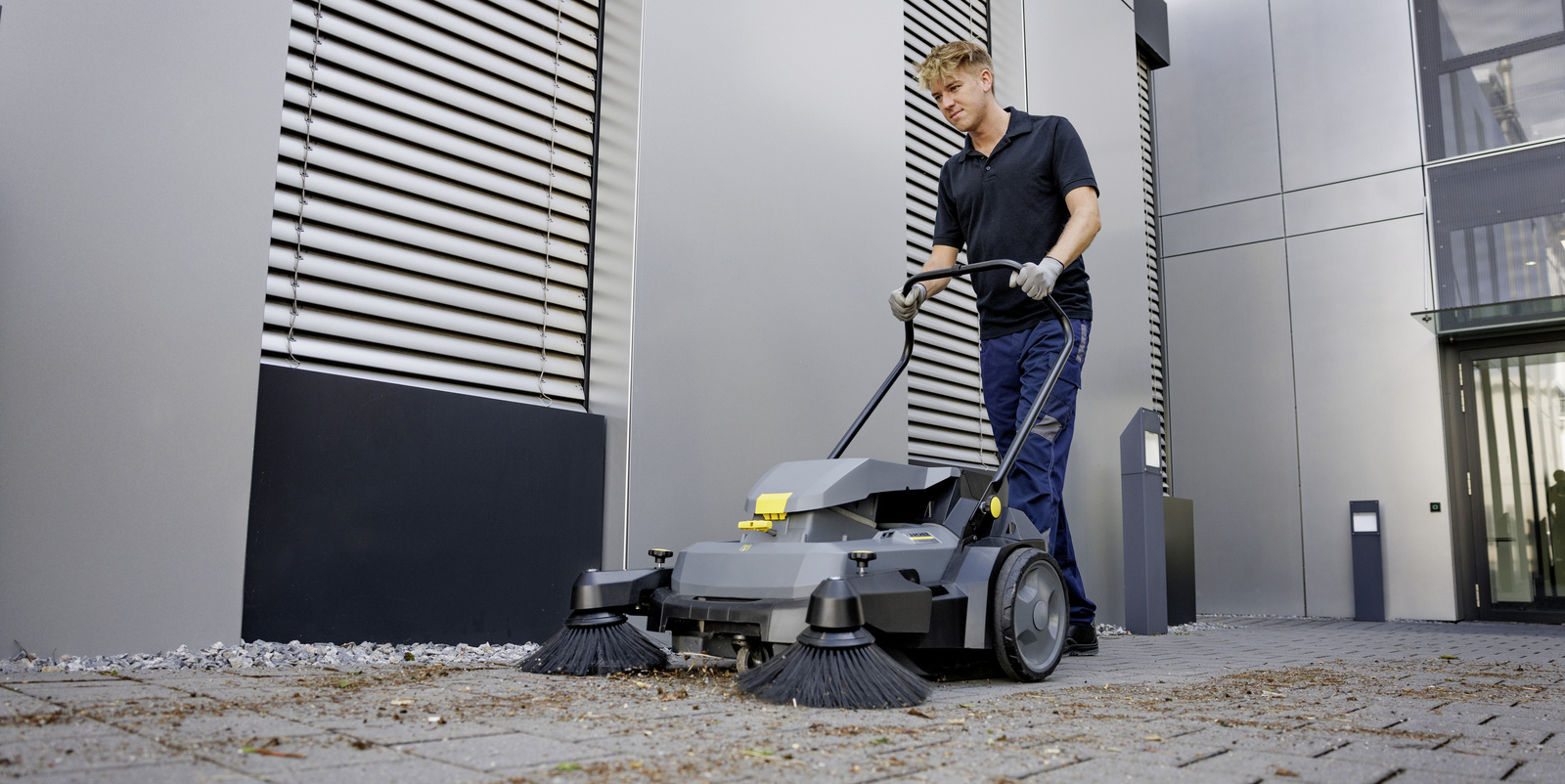
First step in the outside area: technology to suit every requirement
A well-maintained outside area is key to providing a pleasant welcome for residents and visitors alike. It also reduces the amount of dirt that gets inside. For outdoor facilities, such as garden areas or car parks, it is particularly important to have the right technology to work as efficiently as possible. Push sweepers are sufficient for smaller areas, while ride-on models make sense for larger spaces.
Scrubber dryers are ideal for cleaning in cool, wet weather or for removing salt and ingrained dirt. When removing litter, leaves and coarse debris from the grounds, leaf blowers can be a useful tool. Battery-powered models are particularly quiet and less disruptive for residents, visitors and staff. They are also easier to handle and do not emit any exhaust fumes, which benefits both the user and the environment.
Tip 1 – Vacuum sweepers for car parks:
Vacuum sweepers are an excellent choice for cleaning car parks. Because dust and dirt particles are vacuumed straight up into the machine, parked cars do not get covered in dust.
Tip 2 – Fatigue-free working:
Handheld machines with a carrying strap are particularly user-friendly and do not leave operators feeling worn out. Machines with a spring-loaded blower dampen vibrations considerably.
Tip 3 – Methods for clearing snow and gritting:
In the event of snowfall, the appropriate methods of clearing and gritting must be selected depending on the amount of snow and the site. For smaller amounts of snow, the classic snow shovel is sufficient for manual work. A compact snow thrower can easily cope with larger amounts.
Good riddance to bad rubbish: litter clearance made easy
Regular removal of litter from the outside area is indispensable. Litter can be collected with a litter picker to save staff from straining their backs. Food wrappers, etc. can be picked straight off the ground and deposited in a rubbish bag. As well as emptying the bins, it is also important to clean the bins themselves to prevent germs and unpleasant odours. Cleaning staff should always wear personal protective equipment (PPE) and work gloves to do this. The waste must then be separated and disposed of in accordance with local waste regulations.
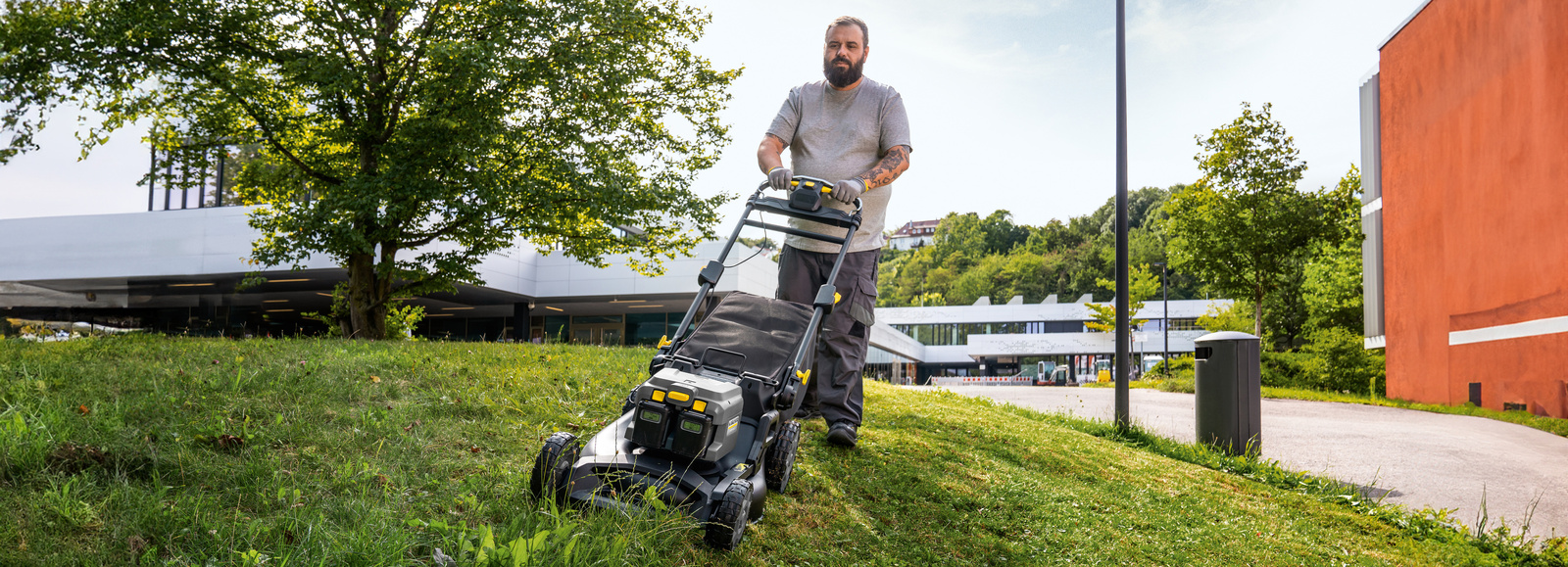
Maintenance of green spaces: the right equipment matters
When it comes to maintaining green spaces, choosing the right lawn mower is key. A suitable model should have a base unit with a collection sack, a mulching function and side or rear discharge, for instance. Having traction drive on either side of the mower keeps the tracking precise, especially on slopes and uneven surfaces. A centralised cutting height adjustment offers additional flexibility. To minimise physical strain and ensure ergonomic and comfortable working conditions, the machine should be as quiet and low-vibration as possible.
Brush cutters with blades are suitable for clearing undergrowth and tall grass, even on steep slopes. Cutting blades that are sharpened on both sides have a longer service life, since the blades can simply be turned over to keep cutting for longer. Trimmer heads are ideal for precise work around trees, pillars or other obstacles, since the trimmer line does not cause any damage. An ergonomic handle position helps to encourage good posture, and models made of aluminium are not only robust but also lightweight, which is especially beneficial when used for long periods.
Tip – Lawn care for healthy grass:
To keep the lawn healthy, it should not be mown too short. The reason for this is that the leaves on the grass stalks transport the moisture from the root to the tip. Too short a cut can damage the grass and cause unsightly brown patches.
Cleaning car parks and outside areas
Whether dining in a restaurant, shopping in a supermarket, furniture store or shopping centre, or visiting a doctor's surgery or a museum – often the first thing guests do upon arrival is to park their car and make a short walk to the building. There are a number of cleaning methods that can be used to make a positive impression right from the start, to prevent the risk of accidents and to stop dirt being brought in from outside.
Entrance area: no entry for dust and dirt
To reduce the amount of dirt entering the building, "clean-off zones" with dust control mats are recommended in the entrance area, ideally extending over six steps. The mats should be regularly cleaned with a battery-powered dry vacuum cleaner to remove dust and loose dirt and, if necessary, wet-cleaned with a high-pressure cleaner. It is also advisable to have them professionally cleaned every two to four weeks.
Daily cleaning (1): bedrooms and toilet facilities
Keeping bedrooms, toilets and bathrooms clean is paramount for health and well-being. Efficient and safe cleaning methods prevent the spread of germs and help to fulfil the high hygiene standards.

Surface cleaning in the room: preventing the spread of germs
Room cleaning varies depending on the room type and furnishings. Cleaning in nursing stations takes less effort, since the few pieces of furniture and other objects are easy to clean. Cleaning in residents' bedrooms, however, can be more challenging as there are often personal items on display. Depending on the general hygiene plan of the retirement home or care home, all surfaces must be cleaned either with or without disinfectant. It is particularly important that frequent "touch surfaces" are disinfected.
When cleaning surfaces manually, the pretreated wipe method or spray method are suitable for preventing the spread of pathogens. Both methods avoid the practice of the same cloth being repeatedly dipped into the same cleaning solution. What's more, cleaning staff don't have to carry a heavy bucket around, as the cloths are already soaked with the right amount of detergent. Alternatively, the cleaning solution can be applied to the cloths (pre-folded two to three times) there and then using a foam dispenser. Every surface is cleaned with a fresh side of the cloth. Once all sides have been used, the cloth is discarded and replaced with a fresh one. It is particularly important that new cleaning textiles are used for each room. This prevents germs from being spread from one resident room or nursing room to the next.
Tip – Dry vacuum cleaner with HEPA 14 filter:
If carpets are laid in the residents' rooms, dry vacuum cleaners with HEPA 14 filters offer added peace of mind. These highly efficient filters remove and trap even the smallest particles such as germs, bacteria, viruses, spores, pollen or dust mites.
Cleaning floors in the bedroom: preventing cross-contamination
For efficient floor cleaning and to prevent slip hazards in the rooms, it is important to distinguish between loose dirt and ingrained dirt. Loose dirt can be easily removed with adhesive-impregnated cloths, while ingrained dirt needs to be removed using wet cleaning methods. The mop cover disposal method, in which new mop covers are used for each room, has become the standard. For good reason, because it saves time and prevents cross-contamination, i.e. the spread of microorganisms from one room to the next.
Surface cleaning in toilets and bathrooms: colour coding for safety
When cleaning toilet facilities and bathrooms, the colour-coding method prevents the transfer of germs. Different-coloured cleaning textiles are used for different areas of application. The signal colour of red is reserved for urinals, toilets and splash areas. Yellow cleaning textiles are used for all other areas of the facilities. The different colours ensure the safety of the cleaning staff.
Tip 1 – Microfibre cloths and glass cleaner:
To prevent streaks from forming when cleaning the mirrors, we recommend using suitable microfibre cloths together with a ready-to-use glass cleaner.
Tip 2 – Cleaning trolleys and cleaning equipment:
Cleaning trolleys and cleaning equipment should be located as close as possible to the place of use, but only in places that are not accessible to residents.
Cleaning toilet facilities and washrooms
There are many reasons why careful cleaning is required in toilet facilities and washrooms: depending on the setting, toilets, showers and changing rooms in office buildings, production facilities, hotels, restaurants, sports halls or shopping centres are used by many people. This inevitably leads to people's skin coming into contact with various different surfaces that have been touched by practically all users of the facilities – including door handles, taps or toilet flush buttons. Consequently, microorganisms can pass from one person to the next. This must be prevented by means of defined cleaning sequences.
Daily cleaning (2): group rooms, dining areas, kitchen
The most efficient time to clean group rooms and dining areas is when they are not in use. When cleaning wall tiles and textured floors in the kitchen, technique is everything. When it comes to disinfection, there are two common errors.
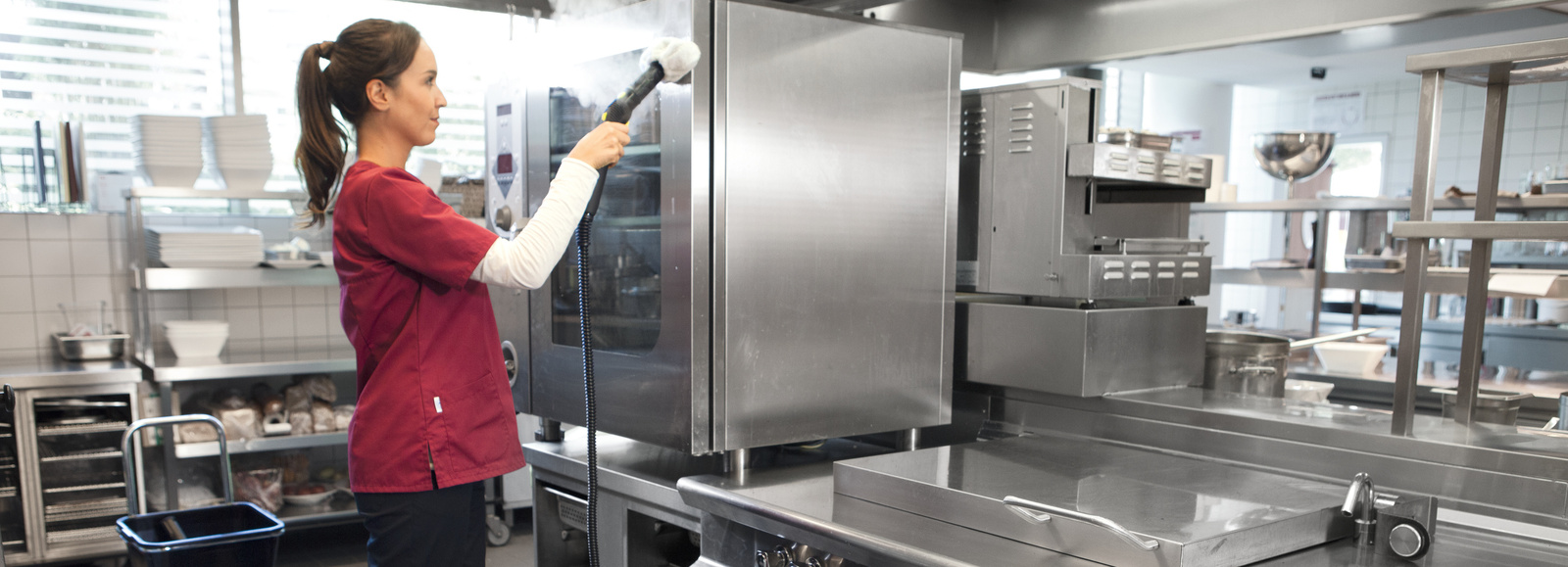
Group rooms and dining areas: cleaning, stain removal, disinfection
Times when the rooms are empty are best for thorough yet efficient maintenance cleaning of lounges, dining areas or cafés. Firstly, any stubborn or loose dirt must be removed from each table. The abrasive properties of pretreated microfibre cloths makes them a great option for a quick and thorough clean. The chairs and all of the contact surfaces, such as the backrests, armrests and the sides underneath the seat, should be wiped down with a damp cloth. Most materials such as wood, leather and plastic can be cleaned using damp methods without any problems. Stains on textiles can be treated with a stain remover. The floors can then either be cleaned with a wet mop or with a scrubber dryer. Disinfection is only necessary in the event of unexpected contamination.
Tip 1 – Treat stains correctly:
For spot removal of stains, always work from the outside in to avoid spreading the stain further on the fabric.
Tip 2 – Disinfection of touch surfaces:
As part of the daily cleaning schedule, areas subject to a lot of hand contact, such as armrests, door handles and control elements of coffee machines or vending machines, should be cleaned and disinfected with a suitable disinfectant.
Cleaning shops selling food
Healthy eating for a healthy life – more and more people are seeing the importance of what's on their plates. Whether using fresh products from a farm shop to make dinner or grabbing a quick lunchtime snack on the go from a kiosk, one thing is vital – there must be scrupulous hygiene standards. Cleanliness and hygiene in sales rooms are fundamental to this. Thorough cleaning is therefore mandatory.
Cleaning in the kitchen: hygiene on the menu
Hygiene is the top priority in kitchens serving retirement homes. Surface cleaners with a rotating nozzle bar and slightly offset power nozzles are an efficient tool for cleaning textured kitchen floors, which often feature displacement nubs. Orbital machines or scrubber dryers with rollers are also an effective alternative. High-pressure cleaners in combination with foam nozzles or cup foam lances are ideal for cleaning wall tiles. Alternating between acidic and alkaline detergents helps to reliably eliminate the breeding grounds of microorganisms.
Disinfection in the kitchen: avoiding pitfalls
Special care must be taken when disinfecting surfaces that come into contact with food. Before these surface can be disinfected, they must first be cleaned then rinsed with drinking water so that no residues of proteins or soap are left behind. Protein errors arise when disinfectants cannot work properly on dirty surfaces, because they prioritise working on the protein residues over disinfecting. Soap errors occur when disinfectants react with detergent residues, rendering them ineffective. This is why it is important to rinse surfaces thoroughly with drinking water after cleaning so that any residue is completely removed.
Tip 1 – Soak joints containing cement:
Joints containing cement are sensitive to acids and should therefore be soaked in water beforehand to prevent damage from acid.
Tip 2 – Steam cleaner for hard-to-reach areas:
Stubborn dirt can be efficiently removed from nooks and crannies with a steam cleaner.
Tip 3 – Cleaning in the event of soap errors:
If the surface is very tacky after disinfection due to a soap error, a detergent with a higher solvent content may help.
Cleaning kitchens
Wherever food is cooked, there will be stubborn stains. Grease and food residues must be systematically removed in accordance with the HACCP guidelines in order to eliminate breeding grounds for microorganisms. What can high-pressure cleaners, surface cleaners, steam cleaners, scrubbers or scrubber dryers do? What specifics need to be considered when using them? And what should disinfection look like? Here is an overview.
Daily cleaning (3): corridors and offices
Corridors in retirement homes should, if possible, only be cleaned using dry methods to prevent causing falls. Where appropriate, scrubber dryers present a good solution. In offices and other administrative areas, cleanliness and hygiene are the basis for a pleasant and healthy working environment.
Cleaning floors in corridors: preventing falls and keeping the noise down
When cleaning the floors of corridors in nursing homes or retirement homes, wet cleaning should be avoided for safety reasons as it poses an increased trip hazard, especially for residents. If wet cleaning cannot be avoided, it ought to be done exclusively at times when there are as few people around as possible, for example during group activity sessions or at lunchtime. Scrubber dryers are well suited to this task as the floors are dry again straight away, eliminating the risk of slipping. Corded machines should only be used in areas where nobody is moving about. Battery-powered appliances are generally safer as there are no cords to trip over. Low-noise machines are recommended to minimise disturbance to residents.
Offices and other administration rooms: cleanliness behind the scenes too
Cleanliness and hygiene are also important in offices and other administration rooms so that employees feel comfortable and safe while at work. As such, floors should be regularly cleaned of loose dirt using a dry vacuum cleaner or dust mop. Where necessary, ingrained dirt should be removed with a microfibre mop or a compact scrubber dryer, depending on the size of the room. Surfaces such as desks, file trays and shelves can be cleaned quickly, easily and efficiently using the pretreated cloth or spray method.
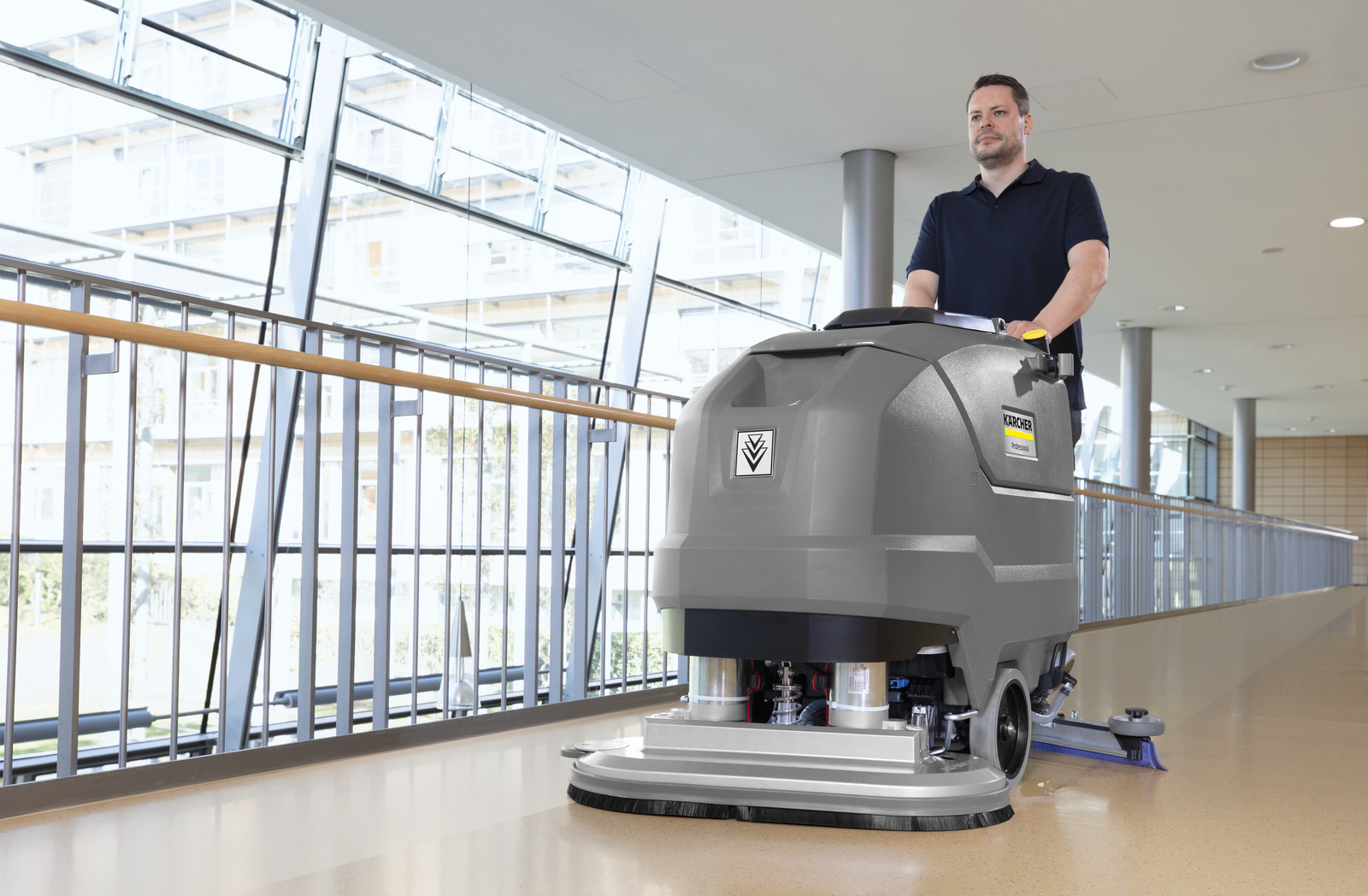
Cleaning offices
Office cleaning takes place in a challenging environment where multiple different priorities come into conflict: time and cost factors, cleaning results, hygiene and sustainability are all interconnected and must be taken into account. As such, it is important to choose the right cleaning methods for the challenge in question. Particularly with a view to ensuring hygiene and sustainability, static cleaning will increasingly be replaced by dynamic cleaning in the future.
Intermediate cleaning: carpets and coated floors
Despite regular and thorough maintenance cleaning, appropriate intermediate cleaning measures are called for from time to time. A carpet cleaning machine makes light work of stubborn dirt on carpets. Spray cleaners or protective coating restoration can be applied to rid coated floors of scratches and ingrained dirt.
Carpets:
carpet cleaning machine or single-disc machine
When cleaning unexpected ingrained deposits from carpets, a conventional spray extraction machine leaves the floor damp for too long. This job is better tackled with a carpet cleaning machine. This applies a small amount of liquid and detergent to the carpet surface. Two contra-rotating brushes of a carpet cleaning machine apply mechanical pressure, which loosens the stuck-on dirt, which can then be vacuumed up after a short drying time.
Coated floors:
spray cleaners and protective coating restoration
Spray cleaning is the right method for light scratches and stubborn stains on coated floors. This means targeting the affected area with a cleaning solution from the spray bottle. The area is then treated with a single-disc machine and a medium-hard pad (red) to remove scratches or blemishes and to restore the floor's even appearance.
An alternative method for intermediate cleaning is to restore the protective coating. This process involves polishing out localised, superficial scratches with a single-disc machine or an orbital oscillating single-disc machine and a diamond pad. Before recoating, any deeper scratches must be sanded off and the transitions smoothed until the original condition is restored. This delays the need for a time-consuming deep clean, saving time and money.
Tip – Single-disc machine with microfibre pad:
Alternatively, an orbital oscillating single-disc machine with a microfibre pad can be used.
Chemical wet deep cleaning & top stripping: cleaning (almost) down to the floor covering
A chemical wet deep clean removes all trace of ingrained dirt and old coatings from PVC and linoleum floors, but requires a longer drying time. Top stripping is an efficient and environmentally friendly alternative that brings the floor to a high gloss without the use of chemicals. If carried out regularly, the process can largely remove the need for a chemical deep clean.
When deep cleaning is the only answer: scratches and ingrained dirt
Retirement homes often feature flooring made from PVC or linoleum. To make them harder wearing, these floors are coated with a polymer dispersion. Over time, however, this coating wears off and scratches appear where dirt easily collects. This makes cleaning more difficult and makes regular deep cleaning necessary to remove ingrained dirt and scratches. If possible, this job should be carried out at night so as not to cause disturbance.
Cleaning floor coverings
Whether carpeting in a hotel corridor, cement screed in a production hall or wooden flooring in a school building, there are countless floor coverings that are suitable for different loads and ensure safety through properties such as anti-slip design or studs. Cleaning floor coverings is important in some areas to ensure hygiene, while in other areas the focus is on appearance. In any case, well-maintained floor coverings have a longer service life and therefore need to be replaced less frequently. Through regular maintenance cleaning, even the need for labour-intensive deep cleans can be delayed.
Chemical wet deep cleaning: value preservation and cleanliness to the core
In the first step of a chemical wet deep clean, the cleaning solution must be spread over the entire area being cleaned. While the solution is left to work for the prescribed contact time, corners and edges, both vertical and horizontal, can be cleaned manually using a corner cleaning device and a suitable pad. Once the contact time has passed, a single-disc machine with a suitable pad is used to remove the old coating. Different pads are used depending on the floor covering: for linoleum, nothing more abrasive than a green (i.e. medium-hard) pad should be used, whereas for PVC, nothing more abrasive than a black (i.e. hard) pad should be used. A wet and dry vacuum cleaner then picks up the dirty water. A final rinse with clean water removes any detergent residues or coating residues from the surface. After the specified drying time – 12 to 24 hours for linoleum – the surface is ready for the new coating to be applied.
Top stripping: alternative to wet deep cleaning
In retirement homes, it is often difficult to carry out a full wet deep clean, because this leaves the floor impassable for long periods of time. Top stripping offers a practical solution that sits somewhere between deep and intermediate cleaning and enables full-surface protective coating restoration. After a single chemical deep clean, the floor is coated in several layers – up to five in Germany and at least seven in the USA. For scratches in the top layers that extend over the entire floor, an oscillating or eccentric scrubbing unit is used to remove the scratches using only water and no chemicals. Finally, the protective coating is restored with two to three new coats. If carried out regularly as required, top stripping can more or less replace chemical deep cleaning.
Suitable products for your area of application
Find a wide range of technology at lightning speed – with the Kärcher Professional product finder
In no time at all, we'll show you the exact Kärcher Professional machine that best suits your specific cleaning task.

